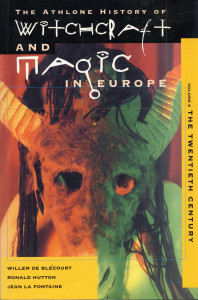Witchcraft and Magic in Europe
“In Willem de Blécourt’s essay the issue of whether continuity in witchcraft is a cultural phenomenon itself or simply a perception of a cultural phenomenon is again powerfufly problematised. Here, however, the perceptions in question are those of academic researchers – above all, the folklorists, criminologists, and anthropologists who in the past have so often treated twentieth-century fears of maleficium merely as anachronisms. Indeed, de Blécourt makes an overwhelming case – hinging on the dilemmas faced by the anthropologist Jeanne Favret-Saada – for the way that scholarly study is always itself conceptually entangled with what it studies. Of course, refusing to treat such fears as exotic superstitions from the past does not preclude recognition of formal continuities or the extent to which similar fears would have been broadly intelligible to even our remote European predecesors. The four types of witchcraft he identifies bewitching, unwitching, witching (securing wealth by witchcraft), and scolding – may manifest themselves differently in today’s conditions but they are categories of behaviour that this series has found throughout Europe’s history. The ‘lived’ context makes them intelligible in, and relevant to, the modern communities that experience them, yet nothing can lessen the shock that comes from reading Favret-Saada’s now classic monograph, Deadly Words: Witchcraft in the Bocage, and recognizing from earlier centuries many of the situations she describes and much of the methodological ambiguities that arise in trying to grasp them. Even so, what cannot be doubted is that much of the modern research discussed by de Blécourt has, indeed, been premised on assumptions of atavism in witchcraft behaviour and discourse. What matters to him, instead, are the local inflections and the immediate context and these have all too often been obliterated by the very methods that have been adopted for recording and analysing modern witchcraft cases, the legend collections and indexes of the folklorists being the most obvious examples.” (x-xi) – Bengt Ankarloo & Stuart Clark
